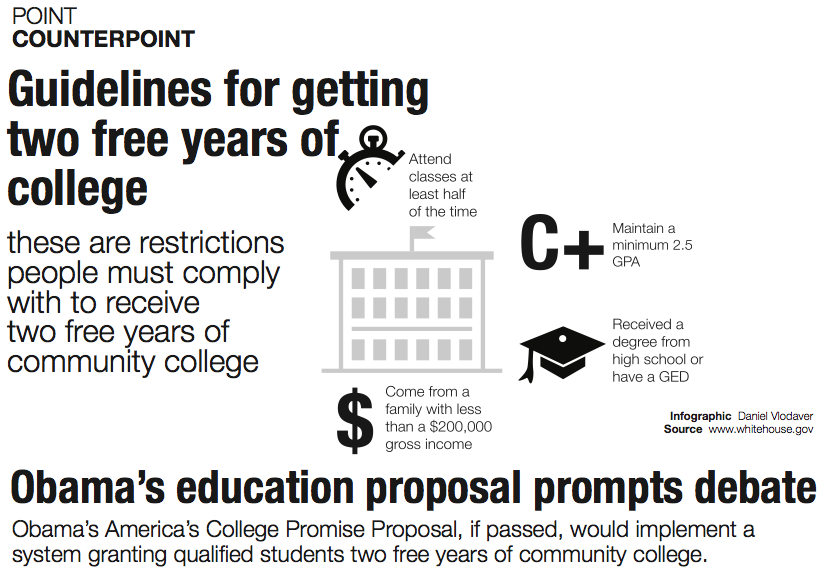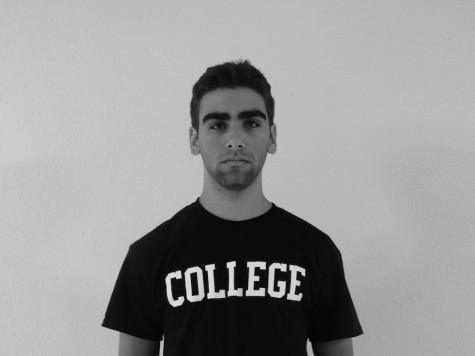Obama’s education proposal prompts debate
Obama’s America’s College Promise Proposal, if passed, would implement a system granting qualified students two free years of community college.
February 19, 2015
Free community college will help the nation
Shifting universal education is the next step
Noah Robiner
Twelve days before the State of the Union Address, President Obama announced his proposal to make two years of community college free.
The proposal requires students attend college at least half-time, make steady progress toward a degree and maintain a 2.5 GPA in transferable academic programs or job training.
In a country where the national student loan debt has surpassed $1.2 trillion, this proposal would benefit 9 million Americans per year, saving a student $3,800 on average per year, according to The White House.
According to graduation records, last year Park sent 54 students to community colleges. That means an annual savings of $205,000 for Park families if the proposal is passed.
During the next decade, the projected total cost would be around $60 billion, practically pocket change in a federal budget which allocated $496 billion for defense in 2014 alone.
Free community college isn’t going to be another federal handout the poor can depend on. It approaches the task on a national, state and local level and pushes students to work hard, work smart and work consistently to receive assistance.
Better education leads to better, higher-paying jobs, which leads to more state and federal income taxes, which leads to increased allowances for programs and initiatives. The government and the economy benefit from an educated workforce.
To be perfectly honest it’s unlikely this proposal is going to make it past a Republican-controlled Congress. Yet at the very least, it ignites a dialogue about equitable domestic funding, the state of higher education, and what the American dream looks like in the new economy.
Good intentions do not equal good policy
The nation cannot afford Obama’s policy
David Hope
In Obama’s latest State of the Union address, he outlined a bold plan to create free community college options for all citizens. This would be a fantastic idea, if it would work.
The plan is ambitious and well-meaning, but it ultimately fails to address the underlying issues and economic scenarios of the nation’s post-secondary education crisis.
To begin with, Obama’s plan fails to clear some basic financial hurdles. Nothing is free, someone must be paying for it. According to the administration the government will put up the dough. But if the government suddenly begins paying for everyone, that money must be coming from somewhere, and our cash-strapped nation can’t afford it. The redistribution of wealth could also have unintended consequences. Middle-class students who can no longer count on their savings may be forced to use government aid as well, increasing the pool of needy students.
If implementation is a problem for the plan, outcome is an even larger warning. There is mounting evidence that subsidized community colleges do not accomplish their goals.
In order to look at what may happen, it helps to look at California, which provides free enrollment to two-thirds of its students. The Golden State teaches us that increasing attendance does not increase college graduation. Since the adoption of the system, attendance has surged but graduation rates have dropped, as students no longer feel the cost of dropping out.
President Obama’s plan is adorably utopian, but fails to provide a source of funding and won’t have the desired outcome. We all want to help the nation, but we need a way that works.





